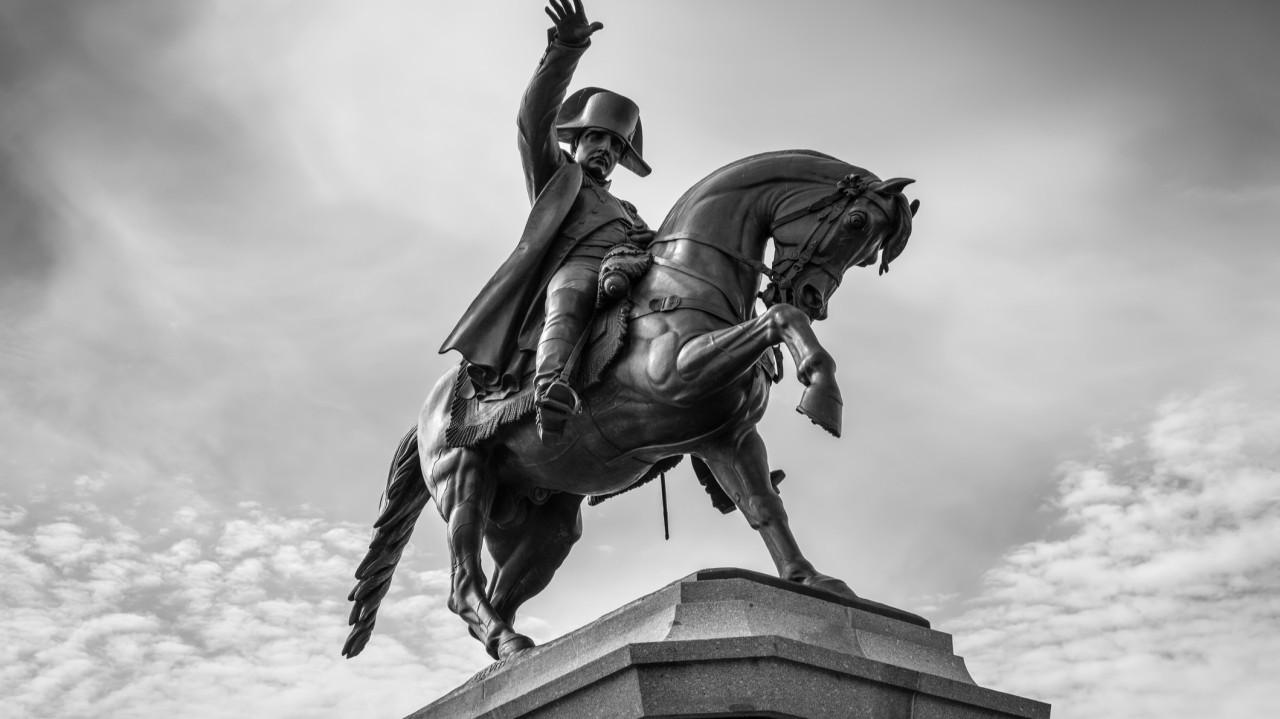“When we are young, we don’t appreciate so many of the things,” said Vincent, the two of us winding our way high into the alps, his son up ahead, carrying our ropes. I had business in Switzerland and snuck back to Argentiere for the weekend to see my old friend. “Maybe we climb with our grandparents, and we think they go too slow, but so much we don’t know,” said Vincent, his life spent in service, high-altitude French mountain guide, a hard journey, filled with beauty, tragedy, sublimity. “Now, sometimes, with my older clients, they have their children, grandchildren. And it is very special thing to hold three generations on my rope.”
Dusted off an anecdote about a climb with Vincent during the year I lived in Argentiere, France, back in 1998 (see below). See you next Sunday with full weekend notes. All the very best, E
Week-in-Review: Mon: China Exports 8.3% (6.6%e), Imports 7.4% (1.8%e). India CPI 1.54% (1.50%e). Trump attends Gaza ceasefire ceremony in Egypt. Bessent still expects that Trump and Xi will meet, despite last week’s US-China trade tension escalation. S&P +1.6%. Tue: China CPI -0.3% (-0.2%e), PPI -2.3% as exp. Germany CPI 2.4% as exp. US China trade tensions increase as China sanctions US units of Hanwha Ocean Co and Trump posts that the US may stop trading in cooking oil from China as retaliation for China avoiding US soybeans. Trump suggested the $20b currency swap for Argentina may be contingent on Milei’s success in the midterm elections. S&P -0.2%. Wed: US empire mfg 10.7 (-1.8e). France CPI 1.2% as exp. China M2 8.4% (8.5%e). Bessent proposes longer tariff truce with China in return for Beijing putting off its plan to tighten its grip on critical rare earths. California federal judge blocks firings of federal workers during the government shutdown. S&P +0.4%. Thu: US Phil Fed business outlook -12.8 (10.0e). UK IP -0.7% (-0.8%e), mfg prod -0.8% (-1.0%e). Trump plans meeting with Putin within next two weeks in Budapest to discuss ceasefire. S&P -0.6%. Fri: Eurozone CPI 2.2% as exp, Core 2.4% (2.3%e). Trump urges Russia and Ukraine to make a deal after meeting with Zelenksy at the White House. Next round of US-China trade talks set for next week between Bessent and Vice Premier He Lifeng in Malaysia, with Trump expressing optimism for an agreement. US government shutdown continues. S&P +0.5%.
Weekly Close: S&P 500 +1.7% and VIX -0.88 at +20.78. Nikkei -1.1%, Shanghai -1.5%, Euro Stoxx +0.4%, Bovespa +1.9%, MSCI World +1.4%, MSCI Emerging -0.3%, Bitcoin -8.7%, and Ethereum -4.6%. USD rose +0.2% vs Turkey, +0.2% vs Indonesia, and +0.1% vs Canada. USD fell -2.0% vs Brazil, -1.2% vs Mexico, -0.8% vs India, -0.8% vs South Africa, -0.6% vs Russia, -0.6% vs Sweden, -0.5% vs Sterling, -0.4% vs Australia, -0.4% vs Yen, -0.3% vs Euro, -0.3% vs Chile, and -0.1% vs China. Gold +5.3%, Silver +6.0%, Oil -2.3%, Copper +1.5%, Iron Ore -1.2%, Corn +2.3%. 10yr Inflation Breakevens (EU -4bps at 1.72%, US -5bps at 2.27%, JP -10bps at 1.56%, and UK -6bps at 3.03%). 2yr Notes -4bps at 3.46% and 10yr Notes -2bps at 4.01%.
2025 Year-to-Date Equity Index Returns: Korea +61.8% priced in US dollars (+56.2% priced in won), Colombia +60.9% priced in US dollars (+39.5% priced in pesos), Czech Republic +54.6% in dollars (+33% in koruna), Hungary +54% in dollars (+29.8% in forint), Poland +53.3% (+35.4%), Greece +52.5% (+35.2%), Spain +51.7% (+34.6%), Israel +49.7% (+35.9%), South Africa +49.1% (+37.2%), Portugal +49% (+32.1%), Mexico +41.4% (+24.7%), Chile +40.8% (+36.1%), Austria +40.3% (+25%), Italy +37.2% (+22.1%), Brazil +36% (+19.2%), Germany +34.4% (+19.7%), Finland +33.1% (+18.5%), Vietnam +32.2% (+36.7%), Ireland +32.2% (+17.2%), Norway +31.9% (+16.5%), Belgium +31.3% (+16.4%), Euro Stoxx 50 +29.2% (+14.5%), Sweden +27.2% (+8.8%), Taiwan +26.7% (+18.5%), HK +25.8% (+25.9%), France +24.9% (+10.8%), Canada +24.8% (+21.8%), Japan +24.6% (+19.3%), Switzerland +24.5% (+9%), Netherlands +22.7% (+8.8%), UK +22.7% (+14.5%), Singapore +20.6% (+14.3%), NASDAQ +17.4%, China +17.3% (+14.6%), MSCI World +15.9% in dollars, Australia +15.6% (+10.2%), S&P 500 +13.3%, Russell +10%, Indonesia +9.3% (+11.8%), UAE +7.5% (+7.5%), India +5.8% (+8.7%), New Zealand +3.7% (+1.4%), Malaysia +3.6% (-2.1%), Saudi Arabia -2.7% (-2.8%), Thailand -5.1% (-9%), Philippines -7.1% (-6.7%), Turkey -12.4% (+3.8%), Denmark -16.7% (-25.7%), Argentina -44.3% (-21.5%).
Anecdote (April 2012): The clank of ice axes shattered our silence. I spun, to see my pack tumble. Twirl. And come to rest, far below. A blue dot, amongst granite boulders. Vincent stood motionless, looking out across the vast glacier, to distant peaks, and said, “You never let go your pack on a ledge, you know this.” And I got hot, knowing then, he’d kicked it. “You’re very tired, me too, which is why you will go get it alone, but you’re also very lucky it is only 40 meters, and not lost, we need that equipment,” he told me. Our friendship was simple, strong. We climbed together, trained nearly every day. I taught him basic English; he failed to teach me mountain French. When clients arrived, I was his Sherpa, helping others attain goals. Tethered to men, confronting fear, stress, obstacles. Theirs. Mine too. So it went. For a year. Vincent was 7th generation high-altitude French mountain guide. And filled our climbs with tales. Into which were woven threads of wisdom, passed from father to son. Unsurprisingly, most lessons concerned risk management. Of course, life’s greatest risks emanate from within. So naturally, training was inwardly directed; developing physical stamina, core strength, balance, discipline, humility, mental toughness. We never really focused on bagging peaks. But rather, on perfecting the journey. And on each one, Vincent created an unexpected challenge, when I was least prepared, most vulnerable, mentally weakened. You see, in crisis, without mental toughness, the best rehearsed exit plans crumble. Anyhow, I descended that cliff. Retrieved my pack. Returned to the ledge, still a little hot, and told Vincent that indeed, I felt real f’in lucky it had been only 40 meters. “You will not always get so lucky,” he replied, his cracked, blistered lips unable to hide a smile.
Good luck out there,
Eric Peters
Chief Investment Officer
One River Asset Management
Disclaimer: All characters and events contained herein are entirely fictional. Even those things that appear based on real people and actual events are products of the author’s imagination. Any similarity is merely coincidental. The numbers are unreliable. The statistics too. Consequently, this message does not contain any investment recommendation, advice, or solicitation of any sort for any product, fund or service. The views expressed are strictly those of the author, even if often times they are not actually views held by the author, or directly contradict those views genuinely held by the author. And the views may certainly differ from those of any firm or person that the author may advise, converse with, or otherwise be associated with. Lastly, any inappropriate language, innuendo or dark humor contained herein is not specifically intended to offend the reader. And besides, nothing could possibly be more offensive than the real-life actions of the inept policy makers, corrupt elected leaders and short, paranoid dictators who infest our little planet. Yet we suffer their indignities every day. Oh yeah, past performance is not indicative of future returns.




